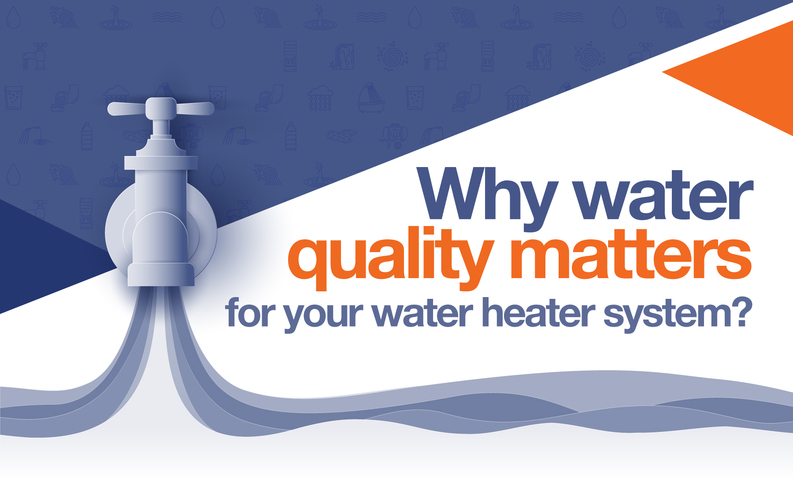Water quality standards (WQS) are provisions of state, territorial, authorized tribal, or federal law approved by EPA* that describes the desired condition of a water body and the means by which that condition will be protected or achieved.
EPA* has established National Primary Drinking Water Regulations (NPDWRs) that set mandatory water quality standards for drinking water contaminants.
In addition, EPA* has established National Secondary Drinking Water Regulations (NSDWRs) that set non-mandatory water quality standards for 15 contaminants.

If you suspect that your water is contaminated in any way, discontinue use of the water heater and contact an authorized technician or licensed professional.
The following table shows the maximum contaminant levels allowed, based on the EPA National Secondary Drinking Water Regulations (40 CFR Part 143.3).

There are a wide variety of problems related to secondary contaminants that can be grouped into three categories:
• Aesthetic effects: unpleasant tastes or odors.
• Cosmetic effects: effects that do not damage the body but are still undesirable.
• Technical effects: damage to water equipment or reduced effectiveness of treatment for other contaminants.

Corrosivity and staining related to corrosion, not only affect the aesthetic quality of water, but may also have significant economic implications.
Other effects of corrosive water, such as the corrosion of iron and copper, may stain household fixtures and impart objectionable metallic taste and red or blue-green color to the water supply. Corrosion of distribution system pipes can reduce water flow.
• Standards related to corrosion and staining: Chloride, Copper, Corrosivity, Iron, Manganese, pH, Total Dissolved Solids, Zinc.

According to the USGS*, water hardness is generally the amount of dissolved calcium and magnesium in water. Hardness is caused by compounds of calcium and magnesium, and by a variety of other metals.
Water hardness varies throughout the United States. Long-term movement of hard water through a pipe can result in what is called scale buildup. Water pipes can gradually close up resulting in less water movement through the pipe and a lowering of water pressure.


Corrosion control is perhaps the single most cost-effective method a system can use to treat for iron, copper, and zinc due to the significant benefits in:
• Reduction of contaminants at the consumer's tap.
• Cost savings due to extending the useful life of water mains and service lines.
• Energy savings from transporting water more easily through smoother, uncorroded pipes.
• Reduced water losses through leaking or broken mains or other plumbing.
This treatment is used to control the acidity, alkalinity, or other water qualities which affect pipes and equipment used to transport water.

If your local water is hard, please review the following recommended treatment and flushing guidelines.


*Flushing is recommended if a treatment device is not installed. This procedure should be performed using white vinegar or solutions that are specifically formulated for use on tankless water heaters.
**Check local codes for any restrictions on use of water softeners.
